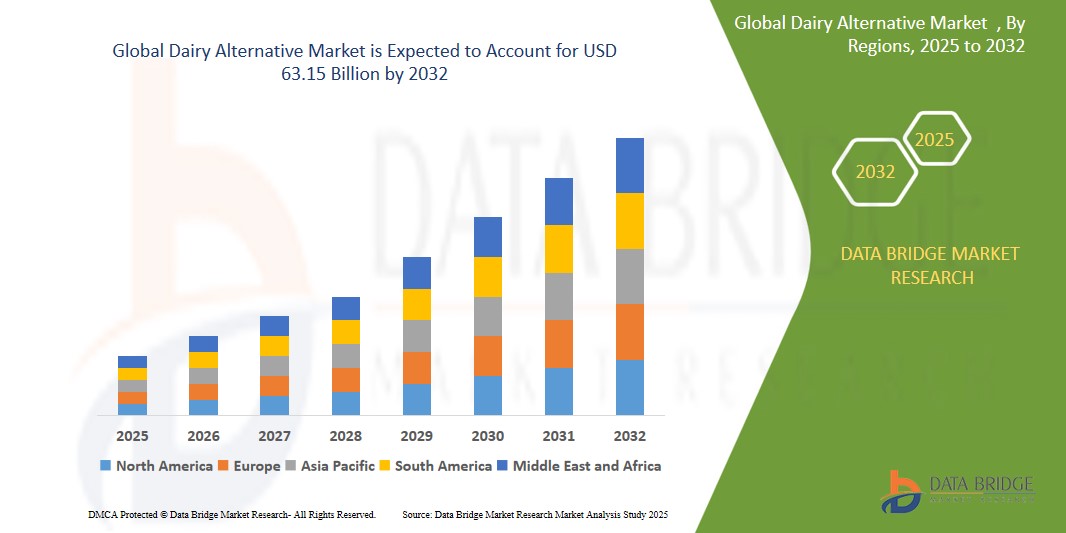Introduction
In recent years, the global food and beverage industry has witnessed a significant transformation driven by changing consumer preferences, health consciousness, and environmental concerns. One of the most remarkable trends emerging from this shift is the rapid growth of the dairy alternatives market. No longer a niche segment catering solely to vegans or lactose-intolerant individuals, dairy alternatives have now entered the mainstream, offering a wide variety of plant-based products that rival traditional dairy in taste, nutrition, and versatility.
This article explores the growth drivers, product innovations, key players, market challenges, and the future outlook of the dairy alternatives industry.
Market Overview
The dairy alternatives market comprises a range of plant-based products including milk, cheese, yogurt, butter, ice cream, and creamers derived from sources such as soy, almond, oat, rice, coconut, cashew, hemp, and peas. These products offer similar textures and tastes to conventional dairy but come without the lactose, cholesterol, or animal-based components.
As of recent estimates, the global dairy alternatives market is valued at over USD 25 billion and is projected to surpass USD 50 billion by 2030, growing at a CAGR of around 10%. This growth is driven by a combination of health awareness, sustainability efforts, and expanding distribution channels.
Key Growth Drivers
1. Health and Wellness Trends
Modern consumers are more informed and health-conscious than ever. Plant-based dairy alternatives often have fewer calories, lower fat, and no cholesterol. Additionally, the absence of lactose makes them suitable for lactose-intolerant individuals, who account for nearly 70% of the global population.
2. Rise in Vegan and Flexitarian Diets
While vegans and vegetarians were early adopters, flexitarians—those reducing animal product intake—are now the dominant consumer group for dairy alternatives. This has widened the market considerably, with plant-based milks and yogurts becoming household staples even in non-vegan homes.
3. Environmental Sustainability
Dairy farming is a resource-intensive industry, contributing significantly to greenhouse gas emissions, deforestation, and water usage. In contrast, plant-based dairy alternatives have a much lower environmental footprint. This eco-friendly appeal resonates strongly with Gen Z and Millennial consumers.
4. Food Allergies and Intolerances
Besides lactose intolerance, some consumers have milk protein allergies or follow dairy-free diets for personal or religious reasons. Dairy alternatives provide a safe and effective solution for these populations.
5. Innovation and Product Variety
The dairy alternatives market has seen a burst of innovation in flavors, packaging, and formulations. From oat milk lattes to almond milk cheese, the variety now mimics or even exceeds that of traditional dairy.
Product Segmentation
1. Plant-Based Milk
Plant-based milk is the largest and most mature segment of the dairy alternatives market. Almond milk leads in popularity, followed by soy, oat, and coconut. Oat milk, in particular, has seen meteoric growth due to its creamy texture and barista-friendly properties.
2. Non-Dairy Yogurt
Non-dairy yogurts made from coconut, soy, almond, and oat milk offer probiotics and are often fortified with calcium and vitamin D. They appeal to health-conscious consumers seeking gut health and dairy-free nutrition.
3. Plant-Based Cheese
Though still a developing segment, plant-based cheese is growing quickly. It faces challenges in texture and melting qualities but continues to improve through ingredient innovation and fermentation technologies.
4. Vegan Ice Cream and Butter
Brands now offer a variety of plant-based frozen desserts made from cashew, coconut, or almond milk. Non-dairy butters are also gaining popularity, especially those made from avocado, olive oil, or soy.
Regional Insights
North America
North America holds the largest market share, driven by health trends, vegan culture, and significant investment in plant-based food startups. The U.S. is a hotbed for dairy alternative innovation.
Europe
Europe follows closely, especially countries like the UK, Germany, and Sweden. High lactose intolerance rates in Southern and Eastern Europe contribute to the demand, alongside strong environmental awareness.
Asia-Pacific
The Asia-Pacific market is booming, led by China, Japan, and India. Traditional use of soy and coconut milk, along with increasing urbanization and westernization of diets, fuel the market’s growth.
Major Players
Key companies operating in the dairy alternatives market include:
- Danone S.A. (owns Alpro and Silk)
- The Hain Celestial Group
- Oatly AB
- Blue Diamond Growers
- Califia Farms
- Nestlé S.A. (entered the market with pea-based drinks and plant-based creamers)
- Ripple Foods
These players are heavily investing in R&D, sustainability initiatives, and marketing campaigns to gain market share and enhance consumer awareness.
Challenges in the Market
Despite its rapid growth, the dairy alternatives market faces several challenges:
- Price Sensitivity: Plant-based alternatives are often more expensive than traditional dairy, limiting adoption in price-sensitive markets.
- Taste and Texture Barriers: Some consumers still perceive plant-based dairy as inferior in taste or mouthfeel, especially in cheese and yogurt.
- Allergen Risks: Nut-based alternatives may pose allergy risks, requiring clear labeling and diversified formulations.
- Regulatory Issues: Labelling debates over whether plant-based products can use terms like “milk” or “cheese” continue in regions such as the U.S. and EU.
Future Outlook
The dairy alternatives market is poised for robust growth in the coming decade. With constant product innovation, wider acceptance, and improved distribution, the plant-based revolution will likely continue disrupting traditional dairy. Future trends may include:
- Fermentation-based dairy alternatives using precision fermentation to create casein and whey without animals.
- Personalized nutrition with fortified, functional, or low-sugar versions tailored to individual health goals.
- Expansion into developing markets, where plant-based diets are culturally compatible but under-commercialized.
Conclusion
The dairy alternatives market exemplifies the future of food—sustainable, health-conscious, and innovative. As consumer awareness and technological advancements evolve, the gap between plant-based and traditional dairy continues to narrow. For businesses and investors, the plant-based dairy revolution offers a unique opportunity to align with global health and sustainability trends while meeting rising consumer demand.
Read More Details : https://www.databridgemarketresearch.com/reports/global-dairy-alternative-market
